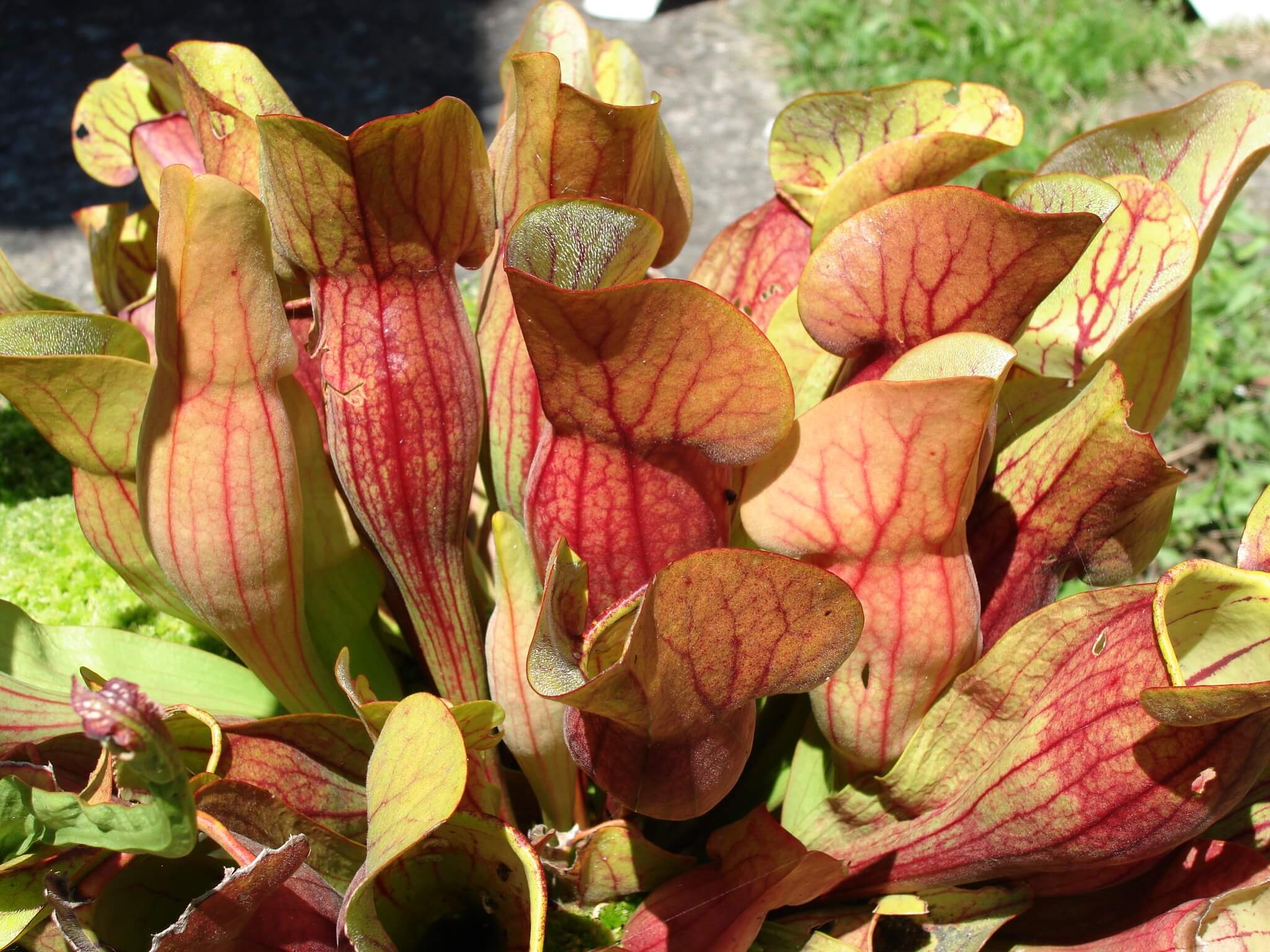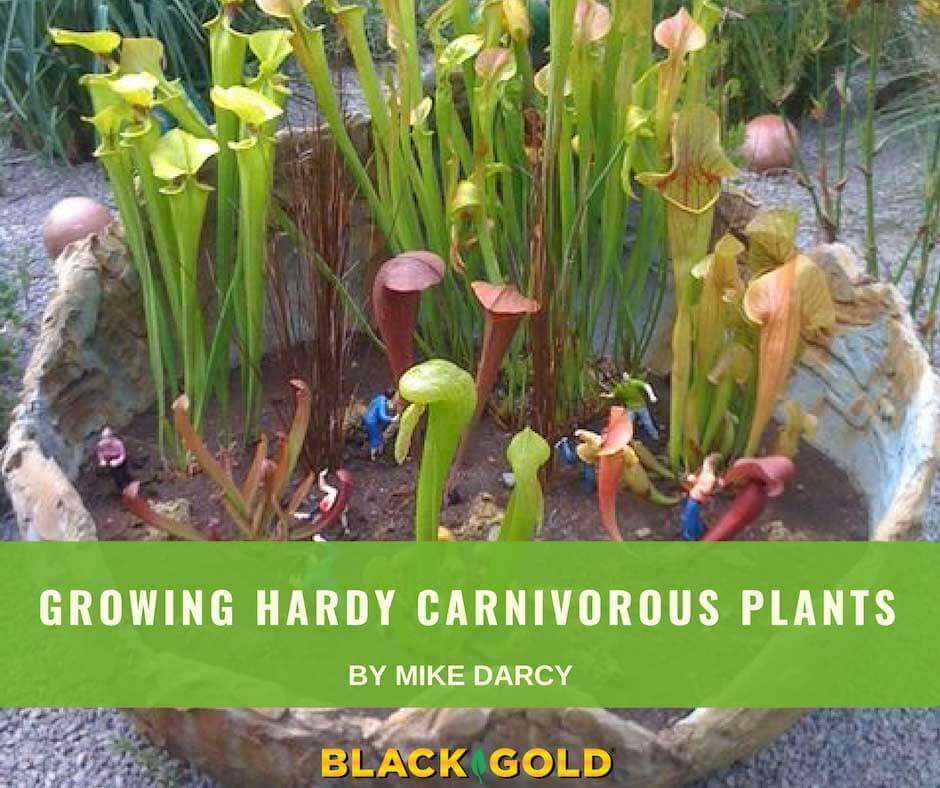
When I was in high school, I bought a Venus fly trap (Dionaea muscipula) because carnivorous plants always intrigued me. It survived a mere few weeks and died. Then when I was in college, I tried again with the same results. Perhaps it was living in hot, dry southern Arizona that did the last plant in, but it was my last attempt to grow Venus fly trap for several years.
Upon moving to Oregon in the late ’60s, I began gardening in earnest with my focus primarily on a huge diversity of perennials and shrubs. It was as though I could not stop buying plants, and with every trip to a garden center, I came home with new ones. But there were no carnivorous plants in the mix. Not yet.
Then on a visit to Southern Oregon and a stop at Darlingtonia State Natural Site, my interest in carnivorous plants was renewed. Here were cobra lilies, (Darlingtonia californica) growing in the wild. It was more delightful than I could have imagined.
Carnivorous Plants for the Garden
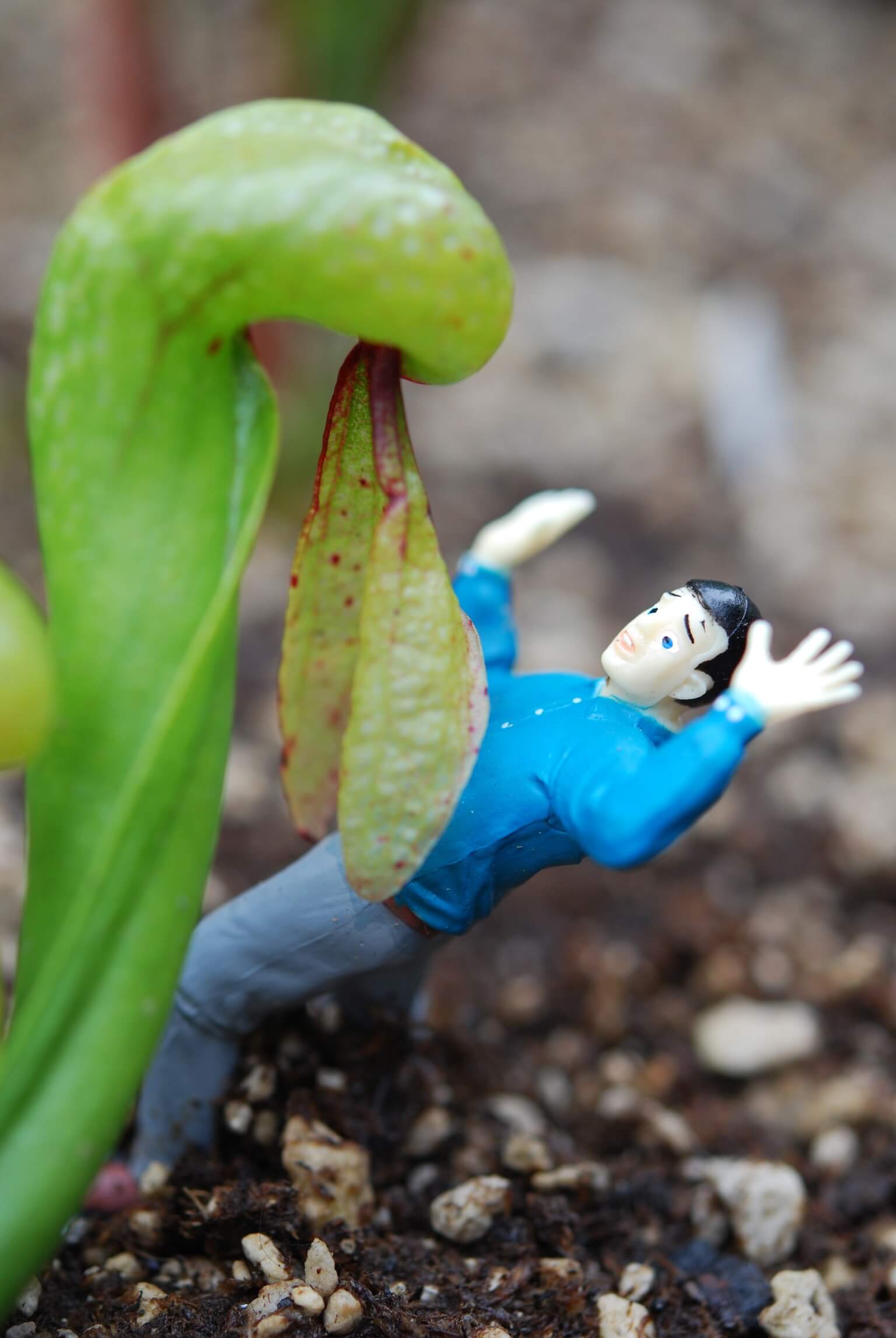
As my gardening intensified, I began to visit other local gardens and one in particular had beds of carnivorous plants. I will never forget it. There were cobra lilies, pitcher plants (Sarracenia spp.) and Venus fly traps, all growing out in the open with no protection from the elements. And, they were beautiful plants in an array of colors.
I was particularly taken with the colors of the pitcher plants with their pitchers in shades of red, chartreuse, maroon, brown and many had intricate veining colors. I knew then that I had to have some of these in my garden! Since that time, I have cultivated several containers of these marvelous plants and find them surprisingly easy to grow.
Carnivorous Plant Cultivation
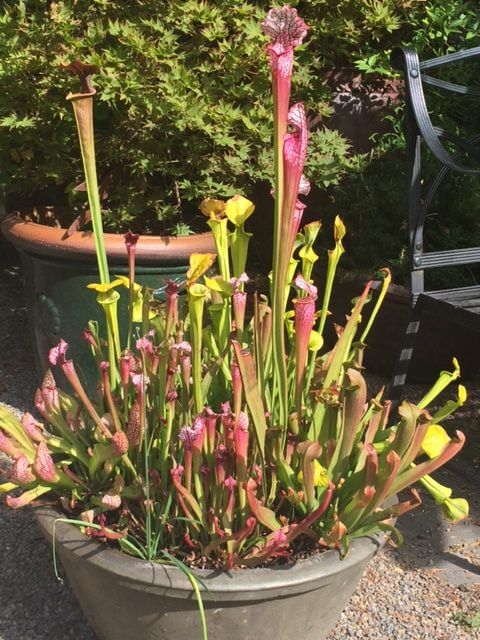
Hardy carnivorous plants naturally grow in bogs and other wetlands where soil-nutrient resources are scarce. That’s why they resort to catching insects to get their “vitamins”. So, it should come as no surprise that certain growing conditions must be met to have success growing these plants. Thankfully, these conditions are not difficult to achieve.
Here are some tips from a Sarracenia gardener, which I have implemented with good success. (This method is also suitable for growing all manner of hardy carnivorous plants.) Select a location in the sun and dig a pit about 18-inches deep and as wide as you want the bed. Then cover the pit with a pond liner and make small slits in the bottom of the liner to allow slow drainage. Sarracenias like soil to be consistently moist but not saturated. Then add a mixture of 3:1 ratio of Black Gold® Peat Moss to pumice. This has proved to be an ideal mix for plants planted both in the ground and slow-draining containers.
A note of caution: do not use a potting mix with fertilizer. These plants do not need or like mix with added fertilizer. They get their nutrients from the insects they capture. In the case of Sarracenia, insects are attracted to a combination of scent and “drugged” edible deposits along with the pitchers that make them fall inside where they are unable to escape due to the presence of slippery hairs that push them downward. Once they fall to the bottom of the pitchers, they drown in secretions and are absorbed by the plant.
Fun to Grow!
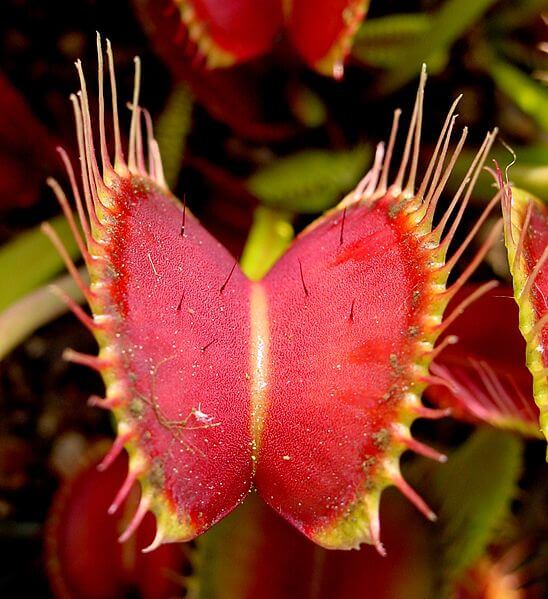
Carnivorous plants are a superb way to get children involved in horticulture. I have learned that my grandchildren delight in showing visitors the trapped insects in the pitchers of Sarracenia or the jaws of a Venus flytrap.
Each year I seem to expand my Sarracenia and Darlingtonia collection by adding new cultivars with different colors. My plants thrive in a large container, in full sun and are left outside in the winter with no damage. In the last few years, I have noticed more gardeners using carnivorous plants, and their availability at local garden centers has steadily increased. Try some Sarracenia in your garden containers this year, you might be pleasantly surprised.
